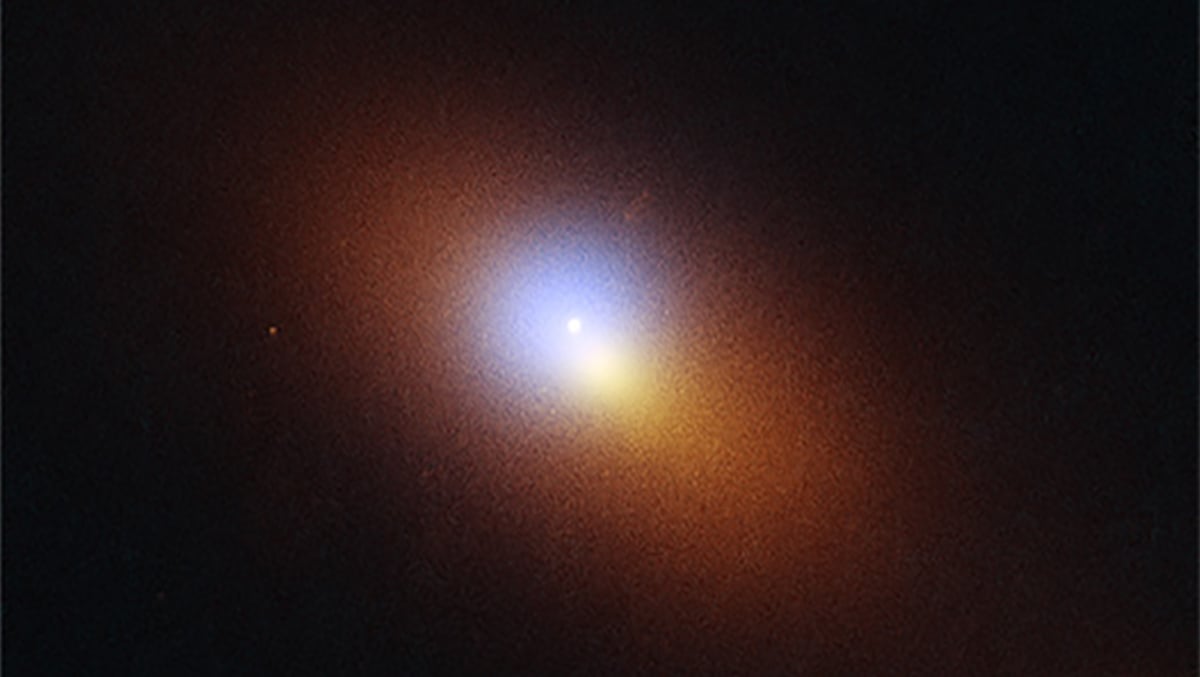
High in the cosmic wilderness, far from the centers of galaxies where black holes usually do not reside, something extraordinary happened. A star wandered too close to a mysterious force lurking on the outskirts of its galaxy and paid the ultimate price. It was torn apart. And that brilliant death gave astronomers a rare chance to see something even more fascinating: a black hole, roaming freely in space, far from its home. This is the story of AT2024tvd – a cosmic crime scene about 600 million light-years away, and how two of NASA’s greatest observatories, Hubble and Chandra, worked together to expose the culprit.
What happened?
In late 2024, astronomers noticed a strange flare in the sky. The Zwicky Transient Facility, a telescope in California that scans the sky for sudden changes, picked up a bright burst of light from a distant galaxy. This wasn’t a normal supernova or gamma-ray burst. The light had the signature of something more specific and violent, a Tidal Disruption Event, or TDE. These events happen when a star gets too close to a black hole. The gravity of the black hole pulls the star apart, creating a hot, glowing swirl of gas. It’s one of the few ways we can actually “see” a black hole, because black holes themselves don’t emit light. But when they feed, the show can be spectacular.

Where was the black hole?
Normally, supermassive black holes, millions or even billions of times more massive than the Sun, sit at the centers of galaxies. That’s where they form and grow, feeding on gas and stars. But this TDE, named AT2024tvd, didn’t happen at the center of its galaxy. Instead, it occurred about 2,600 light-years away from the galactic core.
This unusual position raised eyebrows among astronomers. Was this just a coincidence? Or had they stumbled upon something rare? NASA turned its top tools toward the mystery. The Hubble Space Telescope looked at the location in visible and ultraviolet light. The Chandra X-ray Observatory scanned it in X-rays, which are often produced by the superheated gas around black holes. Both telescopes confirmed the flare’s position, far from the galactic center. That meant only one thing: the black hole that tore the star apart wasn’t sitting where it was supposed to. It was wandering.

Credit: NASA/CXC/Univ. of California, Berkeley/Y. Yao et al. Image Processing: NASA/STScI/J. DePasquale
Meet the rogue
The black hole responsible for AT2024tvd is estimated to be about 1 million times the mass of the Sun. That puts it in the supermassive category, but still much smaller than the galaxy’s central black hole, which is over 100 million solar masses. So, how did this smaller black hole end up roaming the galaxy?
Astronomers have a few ideas. One possibility is that it was once part of a smaller galaxy that merged with the larger one. During the collision, gravitational forces may have flung the black hole away from the center, leaving it to drift in the galaxy’s outer regions. Another idea is that two black holes in a binary pair interacted in a way that kicked one of them out of the core. Regardless of its origin, this discovery proves that massive black holes don’t always stay put. Some become cosmic nomads.
Seeing a TDE from a rogue black hole is incredibly rare. Most TDEs we observe happen in galaxy centers, because that’s where stars are most likely to encounter black holes. Off-nuclear TDEs like AT2024tvd tell us something new: there may be more wandering black holes than we realized. These “hidden giants” might be roaming through galaxies or even floating in the vast spaces between them.
By studying these rogue events, scientists learn more about how galaxies grow and evolve. Black holes play a huge role in shaping galaxies by stirring up gas, turning off star formation, or even merging with other black holes.

A cosmic light show
The image shared by NASA shows a spectacular burst of light in the host galaxy, with a tiny pinpoint marking the TDE’s location. Though it may look like just a speck, it represents a force so strong it shredded a star. When the star was ripped apart, its gas spiraled into an accretion disk around the black hole. The gas heated up to millions of degrees, releasing ultraviolet and X-ray light. These emissions are what Chandra and Hubble picked up. In the months after the event, the light faded. But for a brief time, it gave astronomers a glowing trail back to something nearly invisible.
The bigger picture
NASA has observed many tidal disruption events in the past. But AT2024tvd stands out for one big reason – its location. It’s a case study in how black holes can roam, collide, or even get kicked out of their galactic homes. Astronomers believe that more of these free-floating black holes may be out there. Some could be leftovers from galaxy mergers. Others may have formed in isolation and never reached a galaxy center. If these rogue black holes occasionally light up by consuming stars, telescopes like Zwicky, Hubble, and Chandra will be watching. This event also shows how valuable multi-wavelength astronomy is. No single telescope could have uncovered the full story. It took visible light, ultraviolet, and X-rays, each revealing a different piece of the puzzle.

Credit: NASA/ESA/STScI/HST, Image Processing: NASA/STScI/J. DePasquale
In the dark outskirts of a galaxy 600 million light-years away, a black hole reminded us that it’s still out there, roaming, waiting, and hungry. Thanks to NASA’s Hubble and Chandra telescopes, we didn’t just see a star die. We witnessed a cosmic predator in action, far from where we expected it. These moments, rare and fleeting, are windows into the hidden workings of the universe. And as our tools get better and our eyes sharper, there’s no telling what we’ll find next.
Clear skies!
